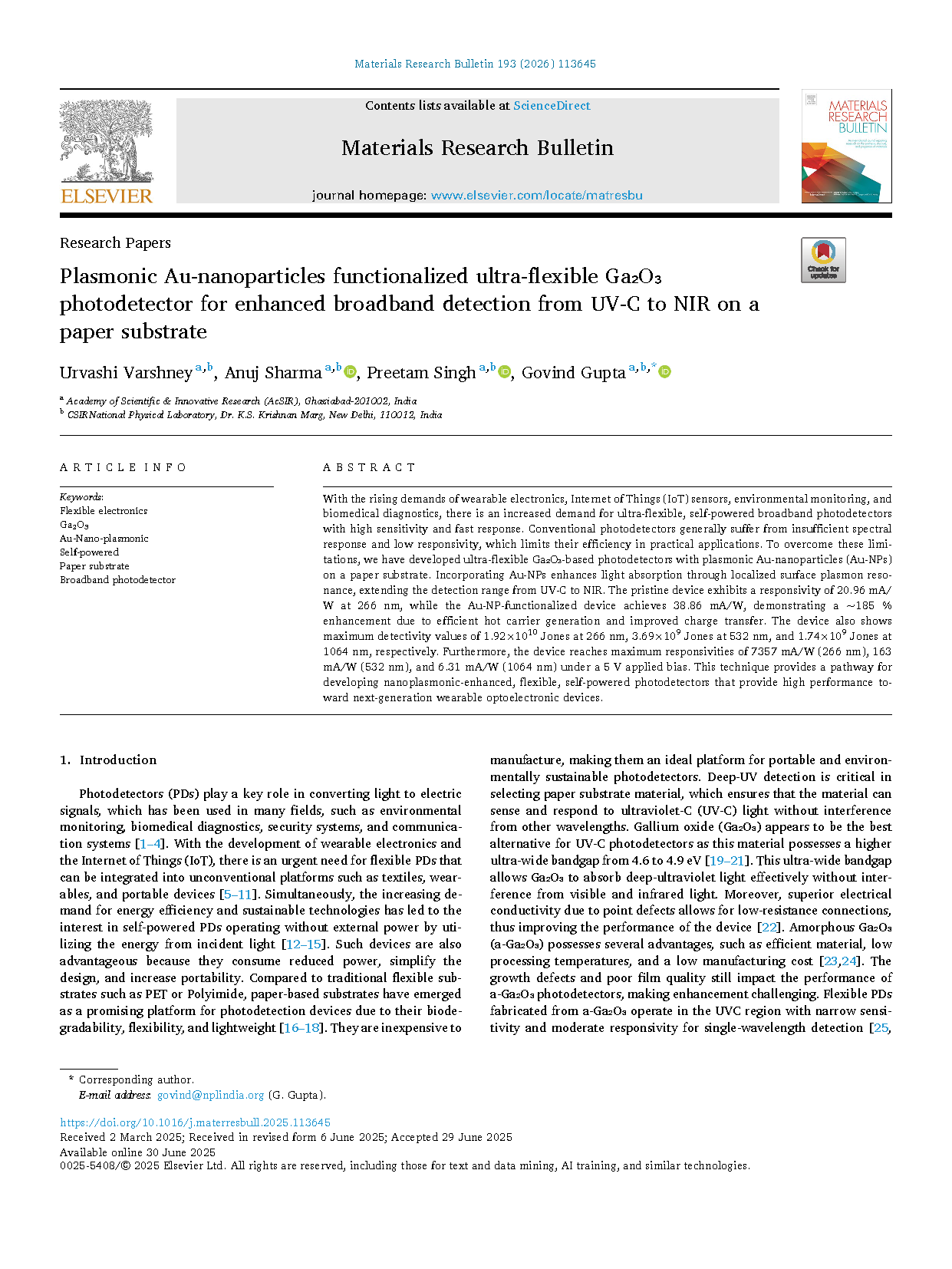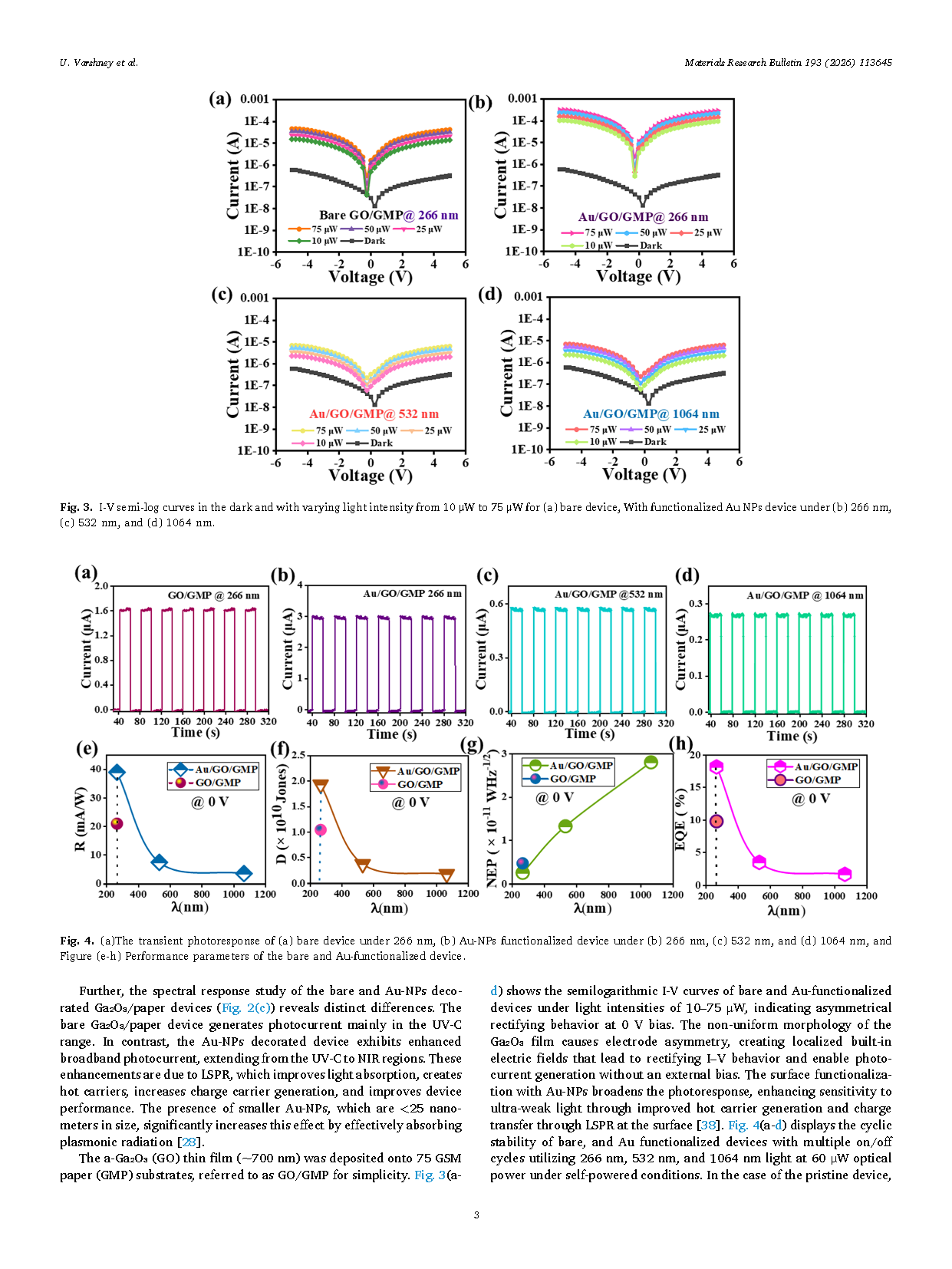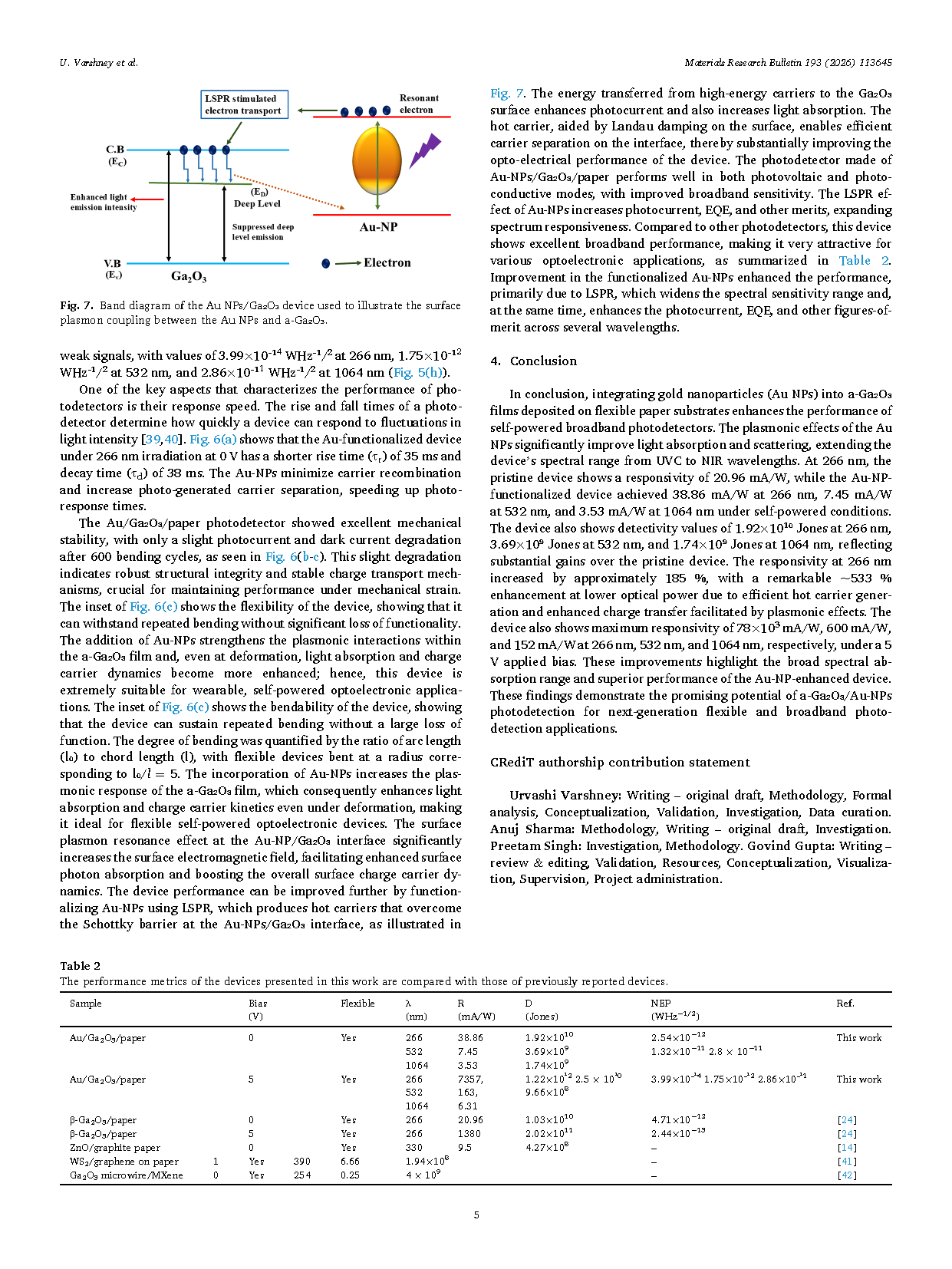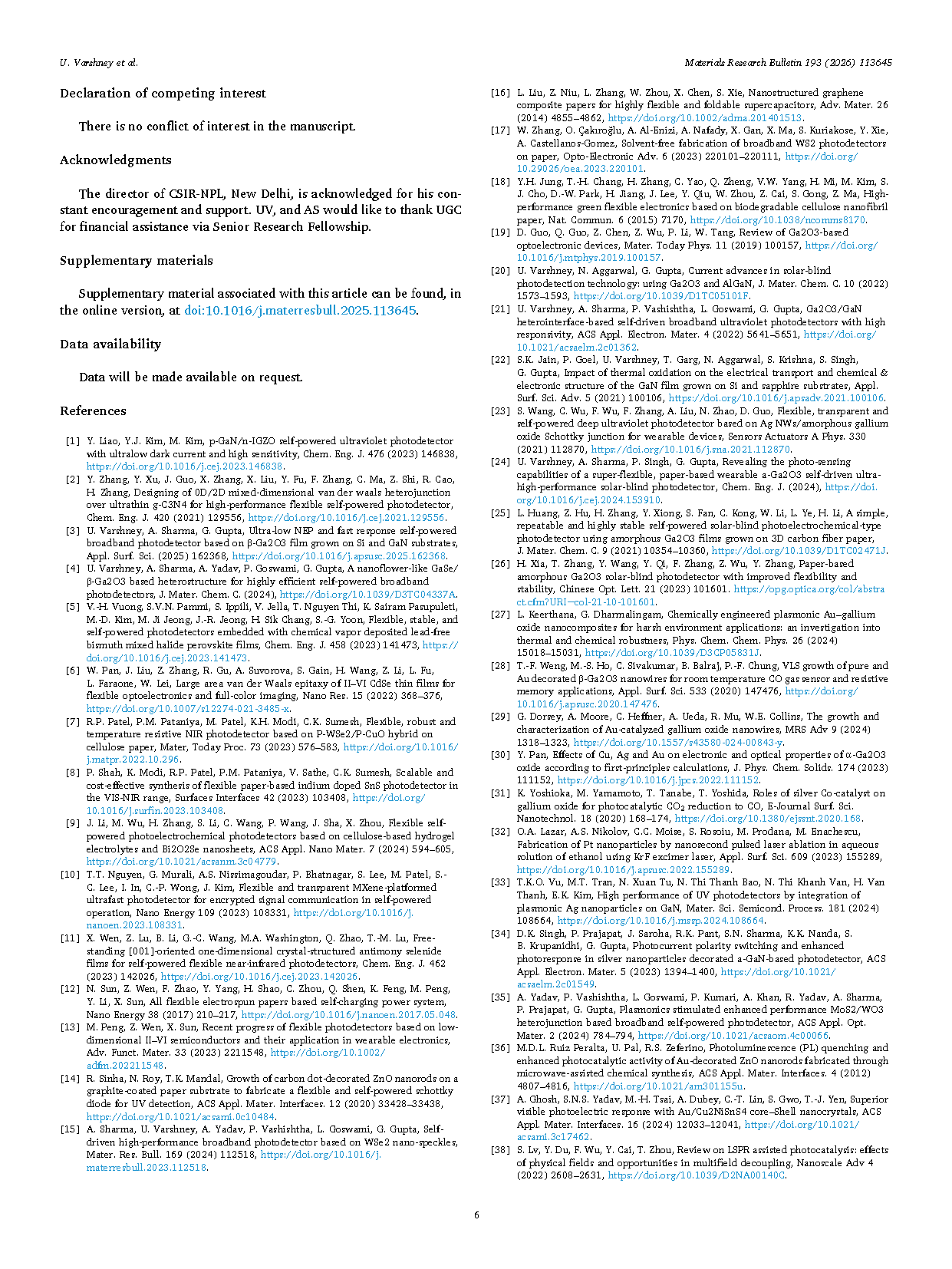
【International Papers】Plasmonic Au-nanoparticles functionalized ultra-flexible Ga₂O₃ photodetector for enhanced broadband detection from UV-C to NIR on a paper substrate
日期:2025-08-11阅读:114
Researchers from the Academy of Scientific & Innovative Research (AcSIR) have published a dissertation titled "Plasmonic Au-nanoparticles functionalized ultra-flexible Ga2O3 photodetector for enhanced broadband detection from UV-C to NIR on a paper substrate" in Materials Research Bulletin.
Background
Photodetectors (PDs) play a key role in converting light to electric signals, which has been used in many fields, such as environmental monitoring, biomedical diagnostics, security systems, and communication systems. With the development of wearable electronics and the Internet of Things (IoT), there is an urgent need for flexible PDs that can be integrated into unconventional platforms such as textiles, wearables, and portable devices. Simultaneously, the increasing demand for energy efficiency and sustainable technologies has led to the interest in self-powered PDs operating without external power by utilizing the energy from incident light. Such devices are also advantageous because they consume reduced power, simplify the design, and increase portability. Compared to traditional flexible substrates such as PET or Polyimide, paper-based substrates have emerged as a promising platform for photodetection devices due to their biodegradability, flexibility, and lightweight. They are inexpensive to manufacture, making them an ideal platform for portable and environmentally sustainable photodetectors.
Abstract
With the rising demands of wearable electronics, Internet of Things (IoT) sensors, environmental monitoring, and biomedical diagnostics, there is an increased demand for ultra-flexible, self-powered broadband photodetectors with high sensitivity and fast response. Conventional photodetectors generally suffer from insufficient spectral response and low responsivity, which limits their efficiency in practical applications. To overcome these limitations, we have developed ultra-flexible Ga2O3-based photodetectors with plasmonic Au-nanoparticles (Au-NPs) on a paper substrate. Incorporating Au-NPs enhances light absorption through localized surface plasmon resonance, extending the detection range from UV-C to NIR. The pristine device exhibits a responsivity of 20.96 mA/W at 266 nm, while the Au-NP-functionalized device achieves 38.86 mA/W, demonstrating a ∼185 % enhancement due to efficient hot carrier generation and improved charge transfer. The device also shows maximum detectivity values of 1.92×1010 Jones at 266 nm, 3.69×109 Jones at 532 nm, and 1.74×109 Jones at 1064 nm, respectively. Furthermore, the device reaches maximum responsivities of 7357 mA/W (266 nm), 163 mA/W (532 nm), and 6.31 mA/W (1064 nm) under a 5 V applied bias. This technique provides a pathway for developing nanoplasmonic-enhanced, flexible, self-powered photodetectors that provide high performance toward next-generation wearable optoelectronic devices.
Highlights
● Developed ultra-flexible Ga2O3-based photodetectors with plasmonic Au-nanoparticles (Au-NPs) on a paper substrate.
● Plasmonic Au-NPs enhance light absorption, extending detection from UV-C to NIR.
● ∼185 % responsivity boost, achieving 38.86 mA/W at 266 nm with high detectivity across UV, visible, and NIR @ 0 V bias.
● The device reaches maximum responsivity of 7357 mA/W (266 nm), 163 mA/W (532 nm), and 6.31 mA/W (1064 nm) under a 5 V applied bias.
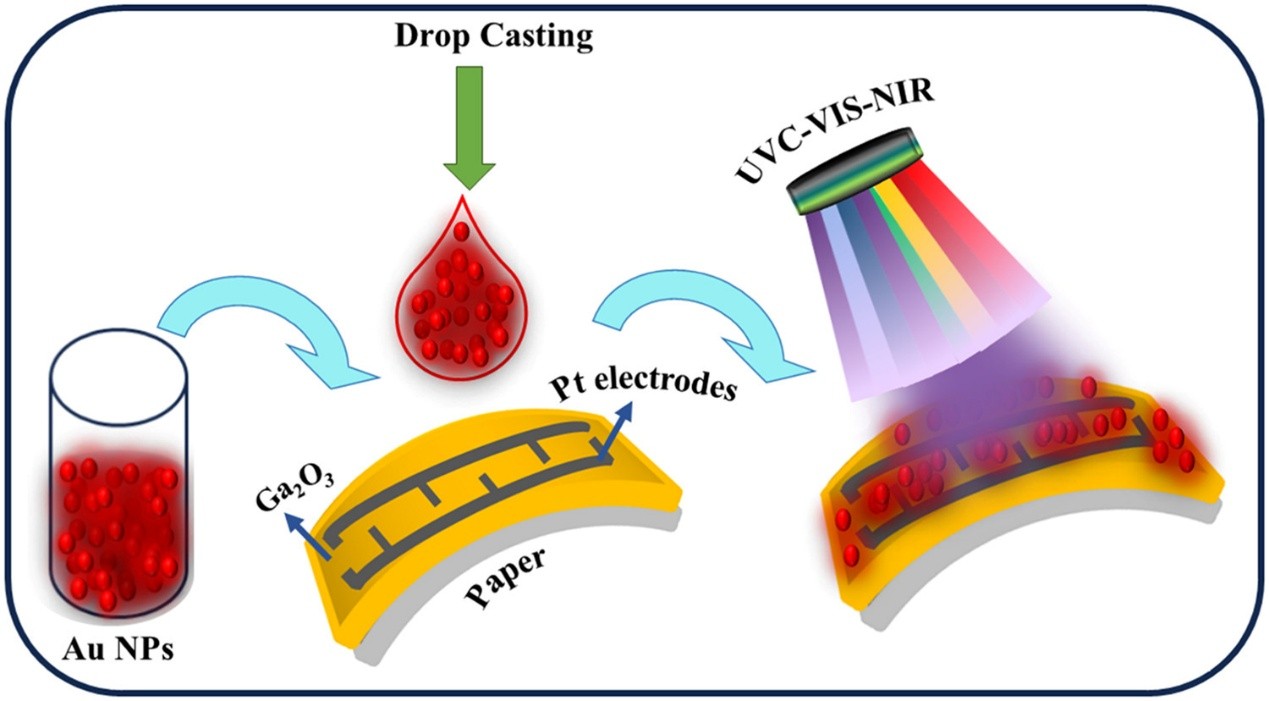
Fig. 1. Diagram illustrating the steps involved in the device fabrication process.

Fig. 2. (a) PL, (b) FESEM image, and (c) Spectral response of the device.
DOI:
doi.org/10.1016/j.materresbull.2025.113645
